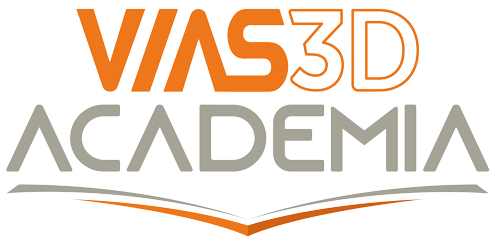
In the realm of academic research and education, access to cutting-edge simulation tools is crucial for advancing knowledge and training the next generation of engineers and scientists. Historically, many universities and research institutions have relied on specific SIMULIA products like Abaqus for finite element analysis (FEA) or CST for electromagnetic simulation, each with its own licensing requirements.
However, the introduction of the SIMULIA Unified License Model by Dassault Systèmes marks a significant shift, offering a more versatile, cost-effective, and streamlined approach to simulation software access.
This blog post will explore the unique benefits that the SIMULIA Unified License Model brings to academic institutions compared to the legacy licensing of SIMULIA Abaqus and CST products.
1. Broad Access to Diverse Simulation Tools
One of the key advantages of the SIMULIA Unified License Model for academia is the comprehensive access it provides to a wide range of SIMULIA applications. Under the legacy model, students and researchers often had to navigate multiple licenses for different products, such as Abaqus for structural analysis or CST for electromagnetic studies. With the Unified License Model, a single licensing structure grants access to all these tools, including additional products like fe-safe for fatigue analysis, Tosca for optimization, and XFlow for computational fluid dynamics (CFD).
This broad access is particularly beneficial in an academic setting where research often spans multiple disciplines. Whether a project involves studying the mechanical properties of materials, simulating electromagnetic fields, or optimizing complex systems, the Unified License Model ensures that all necessary tools are readily available, fostering a more integrated and multidisciplinary approach to research and teaching.
2. Flexibility to Support Diverse Academic Needs
In academia, research demands can be highly variable, with different projects requiring different simulation tools at different times. The SIMULIA Unified License Model offers unparalleled flexibility by allowing institutions to dynamically allocate licenses across various applications as needed. This is a significant improvement over the legacy model, where licenses were often tied to specific products, potentially limiting access to needed tools during peak research periods.
This flexibility is also advantageous in a classroom setting. Educators can tailor their curricula to include a wide range of simulation tools, ensuring that students gain hands-on experience with the latest technologies in multiple domains. As research projects evolve or new courses are introduced, the Unified License Model can easily adapt to support these changes without the need for additional licenses.
3. Cost-Effective Licensing for Academic Institutions
Budget constraints are a common challenge in academic institutions. The SIMULIA Unified License Model addresses this by offering a cost-effective solution that consolidates multiple licenses into a single, unified system. Instead of purchasing individual licenses for each tool, universities and research centers can invest in a unified license that provides access to the entire SIMULIA suite, optimizing costs and simplifying license management.
Moreover, the Unified License Model allows for license sharing across departments and research groups, further enhancing cost efficiency. This means that departments focused on different disciplines, such as
mechanical engineering, electrical engineering, and material science, can all benefit from the same pool of licenses, maximizing the value of the institution's investment in simulation software.
4. Future-Proofing Academic Research Capabilities
As simulation technology continues to evolve, academic institutions must stay at the forefront of these advancements to maintain the relevance and rigor of their research and educational programs. The SIMULIA Unified License Model is designed with this in mind, providing seamless access to new and emerging tools within the SIMULIA portfolio without the need for additional license purchases.
This future-proof approach ensures that students and researchers always have access to the latest simulation technologies, enabling them to conduct cutting-edge research and prepare for the challenges of tomorrow’s engineering and scientific problems. Additionally, as new simulation methods and tools are developed, they are integrated into the existing license, allowing academic institutions to remain agile and
responsive to the evolving needs of their programs.
5. Facilitating Collaboration and Interdisciplinary Research
Collaboration is a cornerstone of academic research, and the SIMULIA Unified License Model significantly enhances collaborative efforts by providing all users with access to the same set of tools. This unified access promotes interdisciplinary research, allowing students and faculty from different departments to work together on complex projects without worrying about software compatibility or licensing issues.
Moreover, the Unified License Model integrates seamlessly with the 3DEXPERIENCE platform, a collaborative environment that supports project management, data sharing, and workflow integration. This integration is particularly valuable for large-scale research projects that involve multiple teams, enabling
more efficient collaboration and better overall outcomes.
Conclusion
The SIMULIA Unified License Model represents a powerful tool for academic institutions, offering broad access to a diverse range of simulation software, enhanced flexibility, cost efficiency, future-proofing, and improved collaboration. By transitioning from the legacy SIMULIA Abaqus and CST products to the Unified License Model, universities and research institutions can unlock new opportunities for research and education, equipping students and faculty with the tools they need to drive innovation and excellence.
For academic institutions committed to advancing knowledge and preparing students for the future, the SIMULIA Unified License Model is an essential investment in their simulation capabilities.






